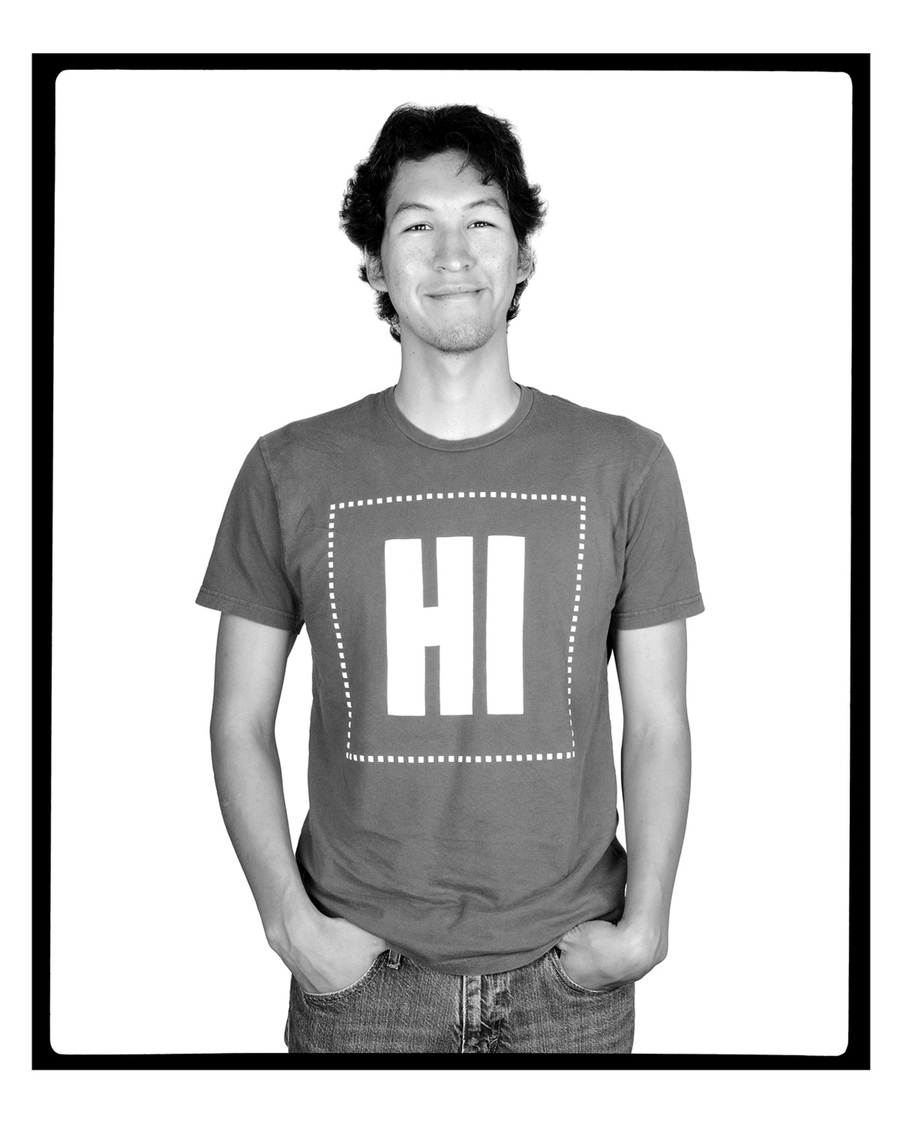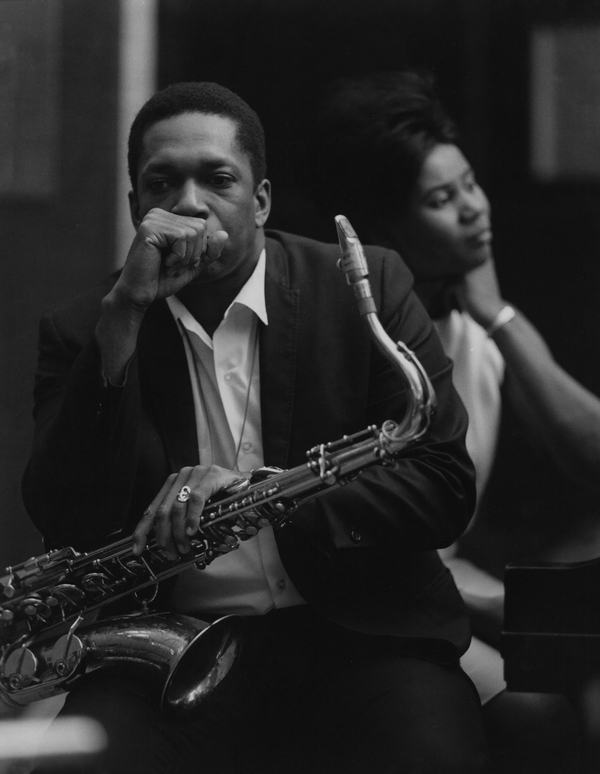 Rosalie Favell, Tom, 2016, From Series: Facing the Camera: NIGIG Residency Toronto 2016. Image Courtesy of the Artist
Rosalie Favell, Tom, 2016, From Series: Facing the Camera: NIGIG Residency Toronto 2016. Image Courtesy of the ArtistPresented as a unique, large-scale, outdoor installation on the façade of Onsite Gallery, Rosalie Favell’s TSÍ TKARÒN:TO comprises a suite of photographs selected from the Ottawa-based Métis artist’s renowned black-and-white portrait series Facing the Camera, a monumental national and international visual archive documenting the broad diversity of Indigenous arts and cultural communities. This iteration features a curated selection of images taken during Favell’s 2016 tenure as Nigig Artist in Residence at the Ontario College of Art and Design University (OCAD U) in Tsi Tkaròn:to. The portraits on display were photographed over three open-invitation sessions hosted by the university’s Indigenous Visual Culture program.
The artist’s broader ongoing project consists of more than 500 photographs taken in cities across Canada, the United States, and Australia between 2008 and 2018, and was revived in 2023. Favell’s ambitious project is the largest documentation of living Indigenous artists and culture bearers—inclusive of a broader swath of the creative-inclined community—developed in the 21st century, established with the intent to save face and acknowledge the visual histories, critical interventions, and creative contributions each person has made. The series highlights the interconnectedness of individual and communal identities to present a positive image of an often underrepresented, joyful, contemporary creative community.
During portrait sessions, Favell encourages individuals to represent their personal and cultural experiences, and frames the self not solely as individualistic but as intrinsically tied to community values, traditions, place, and shared histories. She says, “In these images, as in all my work, I see the photograph as a performance space, where identity is constantly worked and reworked, represented, and perhaps hidden. I use the portrait convention to acknowledge the agency of the individual in bringing together in a conscious and unconscious way, the numerous cultural and personal factors through which the sense of self is expressed.”
The presentation of Facing the Camera: TSÍ TKARÒN:TO as an outdoor mural magnifies the impact of the series’ relationship to both the transient and enduring presence of Toronto’s Indigenous urban community, inherent to place. As a site of interrogation, Favell’s suite of portraits becomes a record for posterity, serving as a profound artistic and cultural statement rejecting imagined archetypes or reductive portrayals, instead recognizing a community that is both diverse and foundational to the city.
 Rosalie Favell, Terri, 2016, From Series: Facing the Camera: NIGIG Residency Toronto 2016. Image Courtesy of the Artist
Rosalie Favell, Terri, 2016, From Series: Facing the Camera: NIGIG Residency Toronto 2016. Image Courtesy of the ArtistBy way of formal introduction, Favell’s portraits gently prod the viewer, the passer-by, to see, acknowledge (as they should the land), and become acquainted with her community through the identities they represent, countering forms of erasure and misrepresentation. The images celebrate individuals’ uniqueness and advance agency for the self to be present, instinctively determined by each sitter through their consensual interaction with the photographer, her process, and ultimately, with the viewer.
Through intimate, one-on-one collaboration, Favell’s open invitation for participation across communities builds on her desire to belong. It expands a space for others to be made visible, welcome, and recognized in a truly authentic manner, bolstered by a longing for kinship. With her photographic practice, the artist consciously addresses the historical baggage of photography as a medium, particularly its recurring role in misrepresenting and/or essentializing Indigenous peoples. Her portraits aim to critically intervene in that history, offering a form of visual empowerment that acknowledges the complex interplay of cultural, political, and social factors shaping identity over time. Favell recounts, “The images are meant to have an edge to them as people find some way of dealing with the camera. To be visualized is a way in which one acknowledges the construction of a positive or empowered representation that includes engaging with, at some level, the numerous social and cultural factors, both good and bad, [A]boriginal and Western, that have affected an understanding of self. This idea of self is not necessarily linked to individualism. Rather, it can be seen as connected to communal needs and values, a sense of place and traditions, as well as personal and extended history.”
_____
Facing the Camera: TSÍ TKARÒN:TO is presented in conjunction with Onsite Gallery’s touring exhibition Rosalie Favell | Belonging (1982–2024), June 18 – December 6, 2025.
Curated by Ryan Rice











































